When it comes to cooking up a juicy and flavorful roast, two cuts of beef often come to mind- rump roast and chuck roast. However, deciding between the two can be daunting when unfamiliar with their differences. Both cuts have distinct characteristics, textures, and tastes, which can make or break a dish. While the rump roast comes from the cow’s rear, the chuck roast is cut from the shoulder region. Each meat displays varying amounts of fat, marbling, and tenderness and requires different cooking methods for optimal results. Hence, your choice of roast – whether it’s’ Rump Roast Vs Chuck Roast – entirely depends on what you want and how you intend to cook it.
What is Rump Roast?
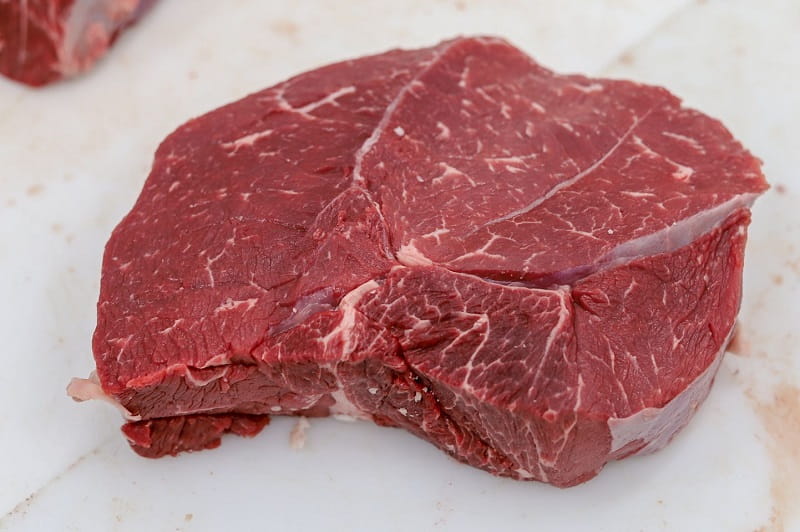
A rump roast is a cut of beef taken from a cow’s hindquarters right above the hip. It’s a lean cut of meat that is full of flavor, with an ample amount of marbling and intramuscular fat. Because of its high-fat content, it’s best cooked with slow, moist-heat methods such as braising or roasting.
Rump roast is an excellent choice for pot roasts, stews, and roasts, as it is a relatively inexpensive cut of beef that is easy to cook and flavorful. It’s a perfect choice for slow cooking since the fat helps to keep the roast moist and flavorful.
Rump roast can be cooked in various ways, including grilling, roasting, and slow cooking. For slow cooking, the roast should be cooked at a low temperature of around 250°F, covered tightly in foil, and cooked for several hours until it is very tender. For roasting or grilling, the roast should be cooked at a higher temperature, usually 350°F to 400°F, and cooked for a shorter time.
What is Chuck Roast?
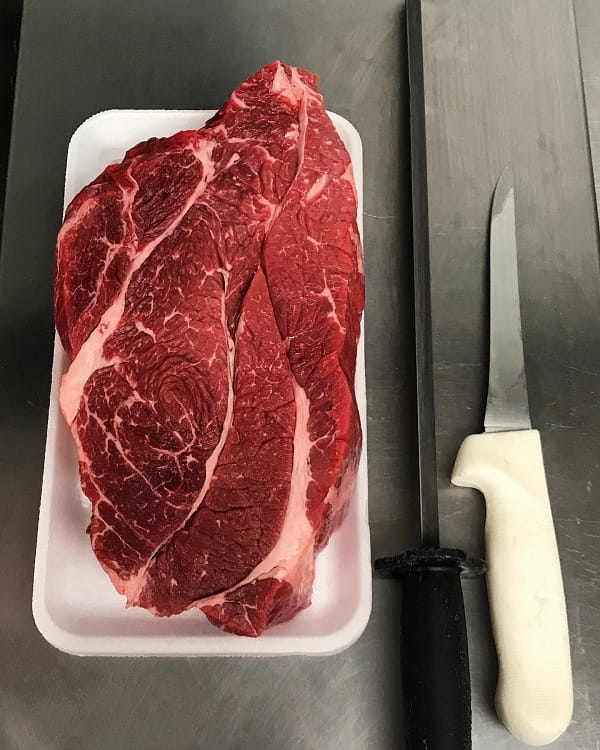
Chuck roast is a cut of beef from the shoulder of the cow. It is an especially tender cut of meat and is often used in slow-cooked dishes such as pot roasts and braises. This cut of beef is also great for sandwiches, tacos, and stews. Chuck roast is a great choice for family meals as it is a budget-friendly cut of meat that can be cooked in various ways.
When buying a chuck roast, look for a cut with a lot of marbling. Marbling is the streaks of fat in the meat, which helps the roast to stay tender and flavorful during cooking. Chuck roast is a relatively inexpensive cut of meat, so you don’t have to worry about breaking the bank.
When cooking chuck roast, it is essential to use low heat over a long period of time. This will ensure that the roast stays juicy and flavorful. Once the roast is cooked, you can serve it with various sides, such as mashed potatoes, vegetables, or salads.
Rump Roast Vs Chuck Roast: The Similarities
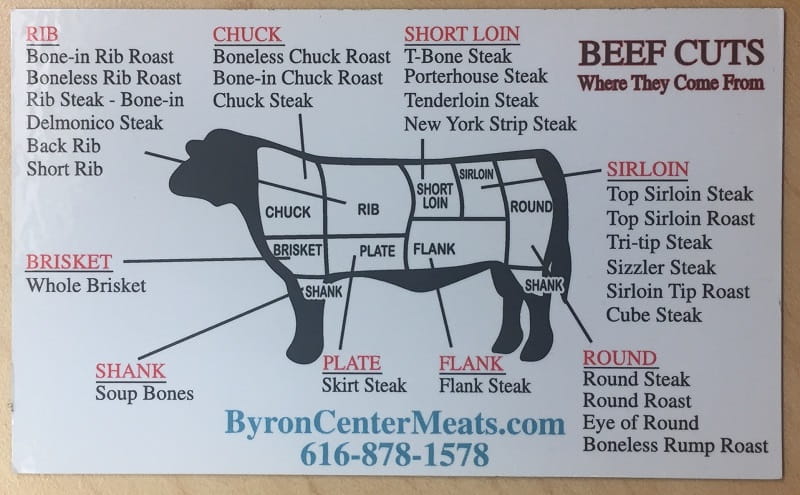
Rump roast and chuck roast are two of the most popular cuts of beef, and they have unique flavors and textures. That being said, there are a few similarities between the two that can make it easier to decide which one you should choose for your next meal.
First and foremost, rump roast and chuck roast are both cuts from the same part of the cow, the shoulder. This means that the two cuts have similar characteristics when it comes to texture, flavor, and cooking methods.
In terms of flavor, both cuts are flavorful and juicy, but they do differ slightly. Rump roast tends to be more robust in flavor, with a deeper taste than chuck roast. On the other hand, Chuck roast is known for its sweeter, more subtle flavor.
When it comes to texture, both cuts are tender and juicy when cooked correctly. Rump roast tends to be slightly tougher than chuck roast, but both will break down when cooked low and slow. Because of this, both cuts can be cooked using various methods, such as braising, slow cooking, or roasting.
The biggest similarity between rump roast and chuck roast is their versatility. Both cuts can be used in various dishes, from stews and soups to casseroles and tacos. They can also be shredded for sandwiches, turned into beef for burgers, or cubed for kabobs.
Rump Roast Vs Chuck Roast: The Difference
When it comes to different cuts of beef, rump roast, and chuck roast are two popular options that may be confused due to their similarities. The rump roast comes from the cow’s hindquarters, while the chuck roast is cut from the shoulder or front part. The main difference lies in their texture, flavor, and cooking time. Rump roast tends to be leaner with a mild taste, making it perfect for cooking at higher temperatures, such as roasting or grilling. On the other hand, chuck roast has more marbling, which adds flavor but requires a longer cooking time as it may be tough. It is great for stewing, braising, or slow-cooking.
Overall, both cuts offer different eating experiences, and the choice depends on personal preference and cooking method. Both cuts of meat have their advantages, and the best cut for your dish will largely depend on the flavor and texture you desire.
Location
Rump roast and chuck roast come from the cow’s same area: the shoulder and upper arm region. However, the rump roast is harvested from the upper portion of the shoulder and upper arm, while the chuck roast comes from the lower sections. This difference in location affects the flavor and texture of the meat.
Fat Content
The fat content of a cut of meat is an important factor to consider when selecting the right cut for a meal. A rump roast is usually lower in fat content than a chuck roast, although this is not always the case. The fat content of the rump roast will depend on where it was cut from on the cow, while chuck roast can be higher in fat content due to the cut of meat being taken from the lower back area.
Which Cut Of Meat Is Leaner, The Rump Roast Or The Chuck Roast?
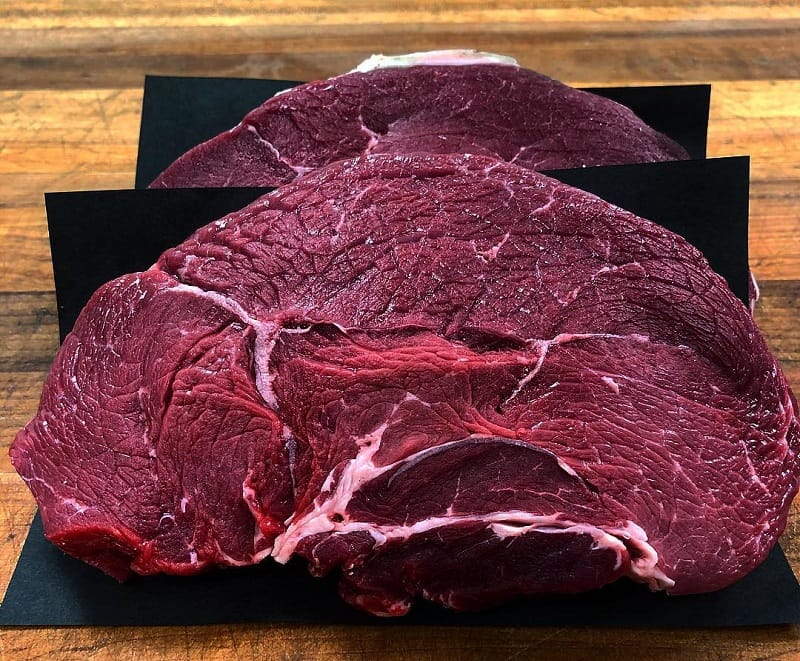
The rump roast is generally leaner than the chuck roast due to its lower fat content. This makes the rump roast a great choice for those looking for a leaner cut of meat that is still packed with flavor. However, the chuck roast has a higher fat content, which can add flavor and juiciness.
Price
When it comes to price, the rump roast tends to be slightly more expensive than the chuck roast. This is because the rump roast is a leaner cut of meat and is typically in higher demand. The chuck roast is usually the better choice if you are looking for a more budget-friendly option.
Cooking Method
Rump roast and chuck roast are best cooked slowly in the oven or on the stovetop. Rump roast can be cooked in one of two ways: roasting the whole roast or cutting it into cubes for stewing. On the other hand, chuck roast should be cooked by braising or slow cooking, which involves simmering the roast in a liquid or sauce for an extended period of time. This method helps to tenderize the meat, making it juicy and flavorful.
Tenderness
Rump roast is typically a tougher cut of beef, but it can be made tender by slow cooking. On the other hand, the chuck roast is already tender and does not require slow cooking. If cooked too quickly or at too high a temperature, chuck roast can become dry and tough. If you’re looking for the most tender roast possible, chuck roast is your best bet.
Calories
Regarding calories, rump roast is slightly higher in calories than chuck roast. Both cuts of beef are relatively lean and low in fat, but rump roast contains slightly fatter than chuck roast. This means that rump roast has more calories per serving, but both are good lean protein sources.
Which Cut Of Meat Is Best For Pot Roast?
When it comes to pot roast, both rump roast and chuck roast are excellent options. Rump roast is leaner and more tender, so that it will produce a juicier roast. However, it can be tough, so it’s best to slow-cook it at a low temperature. Chuck roast is tougher and more flavorful but can be more expensive. If you’re looking for a flavorful and hearty pot roast, chuck roast is the way to go.
Which Cut Of Meat Would Be Best For A Hearty Winter Stew?
For a hearty winter stew, a chuck roast is the better option. The fat and connective tissue in the chuck roast will help to tenderize the meat and add flavor to the stew. It’s’ also a cheaper cut of meat, so it’s’ perfect for a budget-friendly winter stew.
Chuck Roast Or Rump Roast For Slow Cooker
For slow-cooker dishes, both rump roast and chuck roast are excellent options. Rump roast is leaner and more tender, so that it will produce a juicy and tender roast. However, it can be tough, so it’s best to slow-cook it at a low temperature. Chuck roast is tougher and more flavorful but can be more expensive. If you’re looking for a flavorful and hearty slow-cooked dish, chuck roast is the way to go.
Which Cut Of Meat Is Better For Slow Cooking?
When it comes to slow cooking, both rump roast and chuck roast are excellent choices. Rump roast is leaner and more tender, so that it will produce a juicy and tender roast. However, it can be tough, so it’s best to slow-cook it at a low temperature. Chuck roast is tougher and more flavorful but can be more expensive. If you’re looking for a flavorful and hearty slow-cooked dish, chuck roast is the way to go.
Which Is Better – Rump Roast Or Chuck Roast?
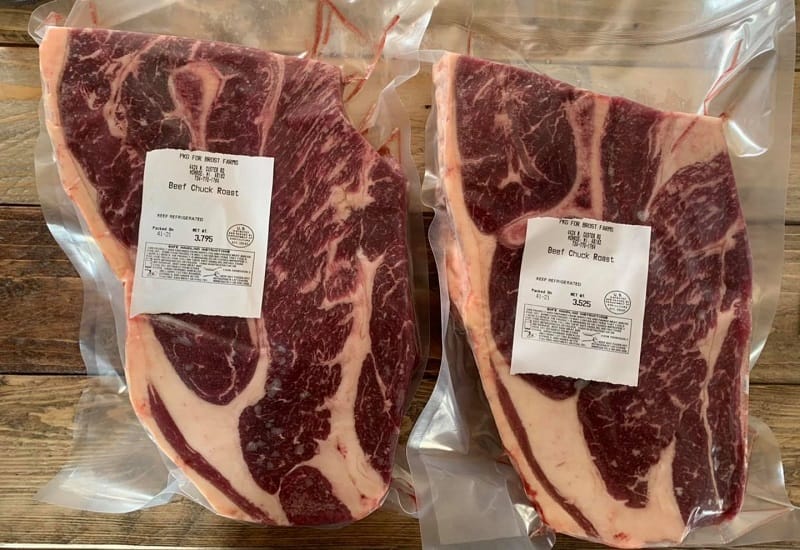
When it comes to choosing between rump roast and chuck roast, it ultimately depends on personal preference. Both cuts of meat have their unique flavor and texture, and it’s up to the individual to decide which one they prefer. While chuck roast has a little more fat, making it slightly higher in calories, it also adds a richer flavor to dishes such as stews and pot roasts.
On the other hand, rump roast has less fat and is leaner than chuck roast, making it a healthier option for those watching their calorie intake. The rump roast is also known for its tender texture due to its high amount of connective tissue. It’s best to try both meat cuts and decide which suits your taste buds and dietary needs best.
Read more:
How to Cook a Chuck Roast?
To begin, you’ll need to select a chuck roast with the right size and shape for your needs. Generally, a chuck roast should weigh between three to five pounds and have good fat marbling throughout. The more fat throughout the roast, the more flavor it will have when cooked.
Once you have your chuck roast, the next step is to prepare it for cooking. Start by trimming any excess fat from the roast. This will prevent the fat from melting away during the cooking process, leaving you with a leaner, healthier roast.
Next, season the chuck roast with your desired herbs and spices. You can combine fresh or dried herbs and spices to create an aromatic and flavorful roast. After seasoning the roast, rub it with a light coating of olive oil to help the flavors of the herbs and spices penetrate the meat.
When the chuck roast is prepped and ready, it’s time to start cooking. The most popular technique for cooking a chuck roast is to slow-cook it in a slow cooker. This method ensures that the roast cooks evenly and remains tender and juicy. Place the roast in your slow cooker with a half cup of water, some chopped onions, and a few cloves of garlic to slow-cook the roast. Cook on low heat for six to eight hours.
Another popular method for cooking a chuck roast is to roast it in the oven. To do this, preheat your oven to 350 degrees. Place the roast in a roasting pan and then rub the outside of the roast with the same seasonings you used on the inside. Roast the roast in the oven for 15 to 20 minutes per pound.
Once the roast is cooked and it has reached the desired internal temperature, please remove it from the oven and let it rest for at least 10 minutes. This will allow the juices to redistribute throughout the roast and let you enjoy a juicy, flavorful roast.
How to Cook a Rump Roast?
Before you start, selecting the right type of roast is essential. Rump roast is a cut of beef from the upper part of the cow’s hindquarter, and it’s’ often referred to as a ” pot roast” because it’s’ perfect for slow cooking in a pot. Look for a roast with good marbling, meaning a lot of fat is interspersed with lean beef.
Once you’ve selected your roast, it’s’ time to season it. You’ll want to coat the meat with salt and pepper liberally, and you can also add other herbs or spices to your taste. Let the roast sit at room temperature for a few minutes while you preheat your oven to 350 degrees.
Next, you’ll need to brown the roast. Heat a few tablespoons of oil in a large skillet over medium-high heat. Once the oil is hot, carefully place the roast in the pan and sear it for about 4 minutes per side. This will give the roast a flavorful crust and help seal the juices.
Once the roast is browned, transfer it to a roasting pan and add a few cups of water or beef broth to the pan. You can add vegetables and seasonings to the pan, such as carrots, onions, garlic, and herbs. Cover the pan with a lid or aluminum foil and place it in the oven.
Bake the roast for about 3 hours or until the internal temperature reaches 145 degrees Fahrenheit. Once the roast is done, let it rest for about 10 minutes before carving. Serve your rump roast with your favorite sides, and enjoy!
How Do You Know When A Rump Roast Or Chuck Roast Is Cooked To Perfection?
Knowing when a roast is done cooking can be tricky, but with a few simple tips and techniques, you can be sure you’re serving up a delicious meal.
When cooking a rump roast or chuck roast, the most important thing to remember is that the roast should be cooked at a low temperature for a long period of time. This allows the roast to become tender and juicy and the fat and connective tissues to break down, giving the roast a more flavorful and tender texture. Roasts should be cooked at 325°F for at least 1.5 hours per pound of meat and can be cooked for up to 4 hours for an extra-tender roast.
When testing for doneness, a thermometer is your best friend. The roast’s internal temperature should reach 145°F for a medium-rare roast, 155°F for a medium roast, and 165°F for a well-done roast. To ensure an accurate reading, insert the thermometer into the thickest part of the roast but not touching the bone.
Another way to gauge doneness is by using the touch test. When you press the roast with a fork or tongs, it should feel tender but not mushy. If the roast is still tough, it needs to cook longer. As the roast continues to cook, you’ll notice that the juices within the meat will become thicker and more abundant.
Finally, the most reliable way to tell when a roast is done is to let it rest. Once the roast is finished cooking, rest for at least 10 minutes before slicing into it. Not only will this ensure an even cooking, but it will also allow the juices to redistribute for a richer flavor.
Can I Substitute Rump Roast For Chuck?
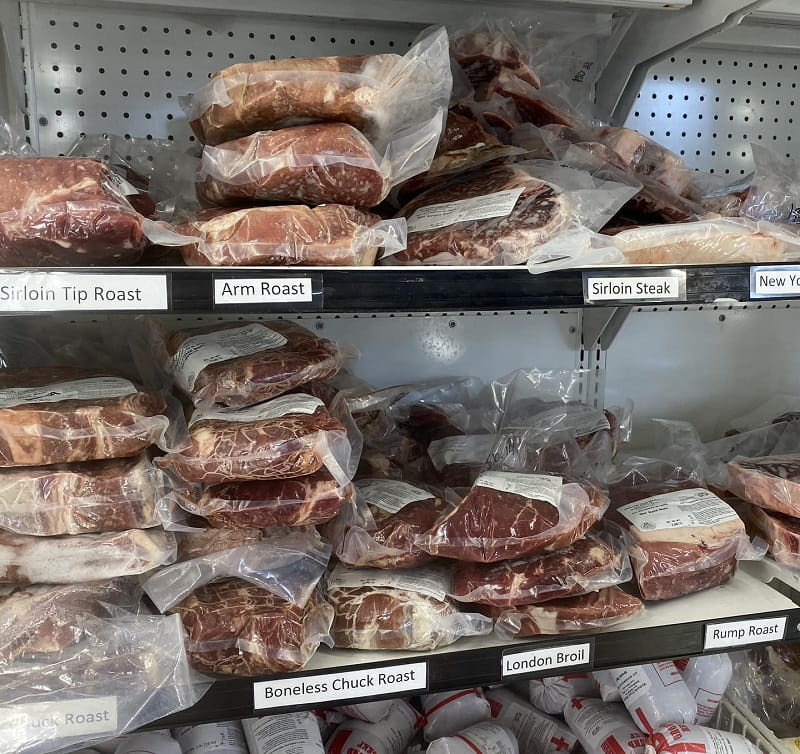
The short answer is yes. You can substitute rump roast for chuck roast in most recipes. But it’s’ important to understand the differences between the two cuts of beef before you make the switch.
Rump roast comes from the hindquarter of the cow, near the hip and rump area. It’s’ a tougher cut of beef with a more prominent grain, so it needs to be cooked slowly and at a lower temperature to ensure tenderness. Rump roast is typically cheaper than chuck roast, so it’s’ ideal for those looking for a cost-effective cut of beef.
On the other hand, Chuck roast comes from the shoulder area of the cow and is much more tender than rump roast. Chuck roast has a finer grain, which makes it perfect for slow cooking and braising. It’s’ also more expensive than rump roast, so it’s’ best reserved for special occasions.
When substituting rump roast for chuck roast, it’s’ important to remember that rump roast will require a longer cooking time than chuck roast. Additionally, you may need to use additional liquid when cooking rump roast, as it can dry out more quickly.
In most recipes, rump roast is a great substitute for chuck roast. It’s’ a more affordable cut of beef, and it can be cooked as tenderly as chuck roast with a few adjustments. Just keep an eye on the cooking time and add liquid as needed.
FAQs About Rump Roast Vs Chuck Roast
Which Cut Of Meat Would Be More Versatile In The Kitchen?
The Chuck eye steak is a great option when it comes to finding a versatile cut of meat for the kitchen. Also known as chuck steak or chuck roast, this cut comes from the shoulder and is tougher than the loin but incredibly flavorful. It can be used in various recipes, making it a versatile choice.
However, the loin is another versatile option perfect for any time of day. It is one of the most tender cuts of beef and can be cooked to medium rare or medium for the best results. No matter what cut of meat one chooses, it is important to remember that the USDA grades beef for quality, with Prime being the highest grade for young, tender, and well-marbled beef.
Can You Use A Rump Roast And A Chuck Roast Interchangeably In Recipes?
The answer is yes, but with some slight adjustments in cooking time. While rump roast and chuck roast are similar in texture and taste, they come from different parts of the cow. Rump roast comes from the hindquarters, while chuck roast comes from the cow’s shoulder portion. Rump roast is best used for braising, stew meat, oven-roasted, or low and slow recipes, while chuck roast is ideal for pot roast, ground beef, and burgers. So if a recipe calls for one of these cuts, but you only have the other, you can make the substitution with confidence knowing that the result will still be delicious.
Can Rump Roast And Chuck Roast Be Grilled Or Smoked?
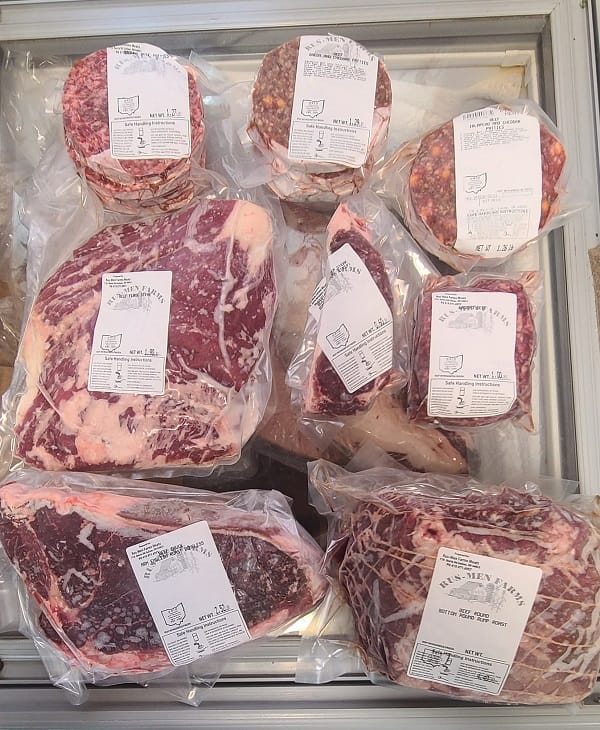
Rump and chuck roast can be grilled or smoked to produce a mouth-watering meat dish. When examining, it is important to ensure that the grill is heated to the appropriate temperature and that the meats are coated with seasonings on all sides. A pellet grill or electric smoker can also smoke the roasts. The process involves cooking the meats low and slows over a period of time, with the use of heavy smoking wood like mesquite for added flavor.
The roasts can be accompanied by a cup of beef broth or water, which steams as it heats, keeping the meat juicy and tender. Whether it’s smoked rump roast or chuck roast, the result is a barbecued beef delight that will satisfy everyone.
What Is Rump Roast Best For?
Rump roast is a versatile cut of beef that can be used for various dishes. Due to its lean nature and well-used muscles, rump roast can be tough if not cooked correctly. However, when appropriately prepared, this cut of meat can be incredibly tender and flavorful. Rump roast is best for slow-cooking methods, such as in a slow cooker or oven, as this makes the meat tender and juicy. It is also great for making hearty beef stews or soups. Rump roast can be seasoned with salt and pepper and various spices and herbs to enhance the flavor.
What Is Chuck Roast Best For?
Chuck roast is a versatile cut of beef that is best utilized for slow-cooking methods, such as roasting, braising, or stewing. Chuck roast comes from the shoulder area of the cow and contains a good amount of marbling, making it perfect for creating a tender and flavorful dishes. The cut’s fat content also makes it ideal for creating stews and pot roasts, as the fat slowly melts during cooking, saturating the meat with its rich flavor.
When cooked at low temperatures for several hours, the chuck roast becomes incredibly tender and can easily be shredded with a fork, making it perfect for sandwiches and wraps. Overall, chuck roast is best for creating comforting, flavorful, and hearty meals that satisfy the whole family.
Conclusion
In conclusion, when it comes to Rump Roast and Chuck Roast, there are pros and cons to each cut of meat. Rump Roast is a leaner cut and is great for slow-cooking and braising. Chuck Roast is fattier and more flavorful, making it great for roasting and slow cooking. Ultimately, the choice between Rump Roast and Chuck Roast is yours. Whether you’re looking for a leaner cut or a tastier option, both Rump Roast and Chuck Roast are great choices. So the next time you’re making a meal, don’t forget to consider Rump Roast Vs Chuck Roast.
References:
- https://www.ehow.com/info_8598686_bottom-round-roast-pot-roast.html
- https://www.bhg.com/chuck-roast-recipes-6836436
- https://restaurantclicks.com/types-of-beef/

Hey readers! Chip Holland here, and I’m a Manager of this website. My passion for writing about it only matches my passion for BBQ. Follow my blog for mouth-watering recipes, tips, and tricks for the perfect smoke, grill, and BBQ. I’m sure you won’t be disappointed!
